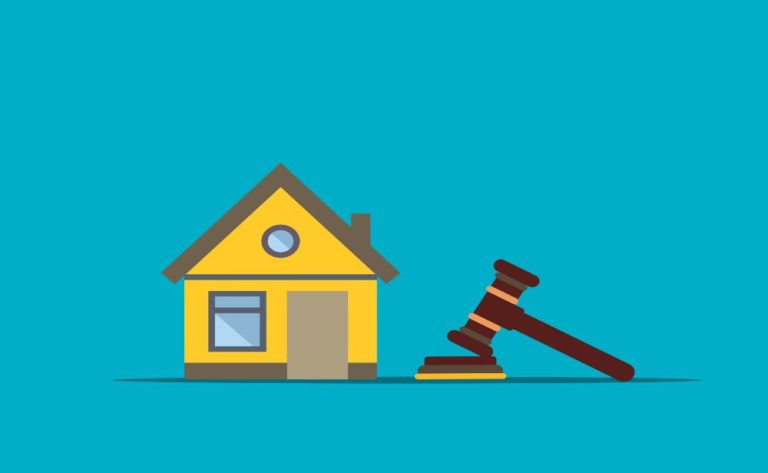How to Relist Your Home for Sale
Even when a home sells in a short amount of time, listing it can be a challenge. However, if your listing does not sell within a reasonable amount of time, you may have to either cancel it or wait until it expires. Either of these options can be quite disheartening, not to mention expensive.
It is time to reevaluate your property once your listing on the MLS has run its course (the length of time it takes to run its course is determined by the agreement you made with your listing agent). If you want to sell your home successfully the second time around, you should make an effort to gain insight from previous failures, reevaluate your pricing strategy, and do whatever else it takes.
1. Find out what the current MLS status of your home is.
You will need to find out the current MLS status of your property before you decide to relist it. It is the very first thing you need to do before you can move forward with a new strategy or hire a new agent. If you don’t do this first, you won’t be able to do the other things.
• Active or on the market means that potential buyers can still view your property as an active listing on the market. In order to proceed with relisting, you will first need to delist the item or cancel the listing.
• Homes that are displayed as having expired or being taken off the market do not need to have their listing cancelled. You are free to relist at any time after the date of expiration has passed. An essential point to keep in mind is that the term “off market” can also be used to refer to for-sale-by-owner (FSBO) homes that may be actively up for sale but are not listed on the multiple listing service (MLS).
What exactly is meant by the term “days on the market” (DOM)?
When a home is listed on the Multiple Listing Service (MLS), the listing will include the number of days that the home has been active on the MLS. This refers to the number of days that the home was active on the MLS before it went pending or under contract.
A data point that real estate analysts use to determine how quickly homes are selling in a particular region or area is referred to as “days on the market,” or “DOM” for short. Days on the market is often abbreviated.
• As of the 30th of September in 2018, the typical duration of a listing on the MLS in the United States was 72 days.
• Housing markets on the West Coast, such as San Jose, San Francisco, and Seattle, have the highest rate of home sales.
• Housing markets in the Midwest and Northeast, such as Peoria, New York City, and Syracuse, have the lowest rate of home sales.
Does the Multiple Listing Service permit a reset of days on the market?
It is possible that you will need to wait approximately ninety days before relisting your property in order to clear your days-on-market history and begin from scratch. The Multiple Listing Service (MLS) in each market functions a little bit differently, which one of the things that makes this situation is challenging. For instance, in Chicago’s MLS, a property must be removed from the market for a period of six months before its DOM can be reset. However, in some cities, your DOM may be reset the moment that your listing is no longer active.
The Multiple Listing Service (MLS) systems in some regions display both the DOM and the cumulative days on market (CDOM). In these circumstances, the DOM starts over from scratch every time a listing expires, a home falls into pending status, or a listing is cancelled. Despite these changes, the CDOM will proceed to count the number of days between the initial listing and the closing within a predetermined window of time and regardless of the outcome.
If your home was placed under contract but the sale fell through, the “counter” that tracks the number of days on the market will resume from the point where it was stopped in some regions.
Regardless of the method by which your MLS computes DOM or CDOM, the following are a few reasons why it might be in your best interest to wait for a reset before relisting:
• If buyers see a high number, they have the potential to use it as leverage or to gain negotiating power. • Buyers may view a high DOM as a red flag on a property, which may cause them to make a lower offer than they would if the listing was new.
• A stale listing can be a sign that the seller is desperate to sell, which may cause the buyer to make a lower offer. They could conclude that there are significant flaws or problems with the property.
This is a crucial point of differentiation. Buyers might only be concerned about the DOM of your home if it is significantly higher than the average number of days a home spends on the market in your area. If every home on the market has a high DOM, it’s probably just a sign that the market is favorable for buyers; this doesn’t necessarily reflect poorly on your particular listing.
On the other hand, a sellers’ market is characterized by a low DOM across the board because it indicates that homes are moving off the market at a rapid pace. In a market where homes are selling quickly, you should reconsider your marketing approach if your property is still on the market.
What does “delist” mean?
When you actively cancel your listing in advance of its expiration, this is referred to as delisting your home. When you and your listing agent first began working together, the two of you settled on the date that would serve as your agreed-upon expiration date. This date can be anywhere from a few months to a few years in length, depending on what is suitable for the market in which you are operating.
What exactly is meant by “off market”?
There are two scenarios in which your house could be considered to be off the market. To begin, if your home’s MLS listing has already terminated, it is no longer available for sale. But “off market” can also refer to a home that is actually up for sale but isn’t listed on the multiple listing service (MLS). For sale by owners (FSBOs) and pre-market homes are two examples.
The effect that being delisted has on the listing agreement you have in place
If your home is currently listed with an agent, you may have to wait until the listing expires. If you do not wish to wait, it is possible that you will be charged a cancellation fee; verify the termination clause in the agreement that you have with the listing service.
If the listing for your home on the MLS has already been removed, you are free to list the property with another agent as soon as the expiration date has passed at midnight.
When an agent is a member of a professional organisation, they are typically expected to uphold certain ethical standards, one of which is to refrain from contacting sellers who are in the process of working with another agent. However, you always have the option to do agent interviews in preparation for your listing to lapse or be removed.
What are the steps to relisting an FSBO?
Since your property was never listed on the MLS to begin with, you are exempt from the requirements that come with officially relisting it if you are selling your house through a for-sale-by-owner transaction. At any point in time and in any location that you want, you are free to remove your home from any listing that you have made for it.
One thing that you should keep in mind is that, depending on the website you listed your property on, prospective purchasers may be able to view your listing activity in the property history. This is something that you should keep in mind. The dates when a home was first listed for sale and when it was removed from the market are typically kept track of by the majority of real estate search websites.
If you are selling your home by yourself (FSBO) and it hasn’t sold yet, you may want to think about hiring an agent. This person can assist you in determining the reasons why your home may not have sold the first time around and provide you with professional advice to assist you in making adjustments for the relisting. Because you do not have to wait for a listing agreement to run its course before beginning to work with an agent, you are free to do so whenever you choose.
2. Determine any shortcomings in the listing and the property
Take into consideration the following possible explanations for why your home did not sell the first time around:
• Overpriced: Although a house can be sold with a compelling listing price, overpricing is a common reason why homes take longer to sell than they otherwise would. How can you tell if the asking price for your home was too high? It is likely that the asking price is too high because you had a few dozen people visit but nobody made an offer. According to the Consumer Housing Trends Report 2019, sixty percent of sellers in the previous twelve months made at least one price cut; therefore, if you need to consider changing your price, you are not alone; in fact, sixty percent of sellers in the previous twelve months made at least one price cut.
• January is generally not the best month of the year to put your home up for sale, although there are some rare exceptions to this rule.
• A slow market, which favors buyers: When there are more homes available for sale than there are people looking to buy them, this is known as a buyer’s market. Despite the fact that market trends can be persistent and that you have no control over them, lowering your price can help motivate customers to make purchases.
• Challenging to demonstrate: It’s possible that you turned off potential buyers by limiting the showing hours for your home by making it tenant-occupied or by doing so for some other reason.
• A low commission for the buyer’s agent: This is a relatively common problem that arises with for-sale-by-owner (FSBO) listings; buyer’s agents may be reluctant to show your listing if you are not offering a full 3 percent commission on the sale.
• Bad photos: These days, prospective buyers start their search online, which means that the listing images of your house are the first impression potential buyers get of it. It’s possible that the images didn’t do a good enough job of showcasing your property, which would explain why there were so few showings.
Pay attention to the comments.
Be careful not to repeat the same errors twice. Pay attention to what previous buyers and their real estate agents had to say about your home and the reasons why they decided not to make an offer on it.
It is essential that you take into account the viewpoint of your current agent as well. Your real estate agent should be an expert on local real estate market trends, so if they make suggestions about the best time to sell, improvements you should make while your house is off the market, or the price you should list at, paying attention to what they have to say and acting on their advice could help improve the outcome of your transaction in the future.
3. Take into account the representation
It is also possible that your real estate agent was the cause of the difficulties you experienced when trying to sell your house within the time frame you desired. You might want to think about switching real estate agents if the one you picked wasn’t very knowledgeable about your area or if you went with a part-time agent who was a friend. Here are some pointers to consider when searching for the ideal agent for a second time.
How to Find the Right Representative to Hire
• You should never settle on one real estate agent before conducting interviews with multiple candidates.
• Read customer feedback on websites such as Zillow, Google, Yelp, and Facebook.
• Inquire about referrals from close family and friends.
• Determine whether or not they have a presence on social media; this is especially important if they live in a city.
• Ensure that the real estate agent you choose has a comprehensive advertising strategy, which should include a plan to list the property on the Multiple Listing Service (MLS) as well as sites like Zillow.
• Confirm that their listing package includes high-resolution professional photographs. This is an essential component.
• Inquire about the availability of videography and 3D tours from them.
• Make sure you inquire about their showing strategy, such as whether they use open houses, private tours, lockbox showings, or a combination of these.
• Inquire as to whether or not they provide staging; in some cases, it is included in the price of a certain package.
4. Invest time and effort into preparing the house for sale.
Reviving an old listing is unquestionably one of the things you will want to do when dealing with an outdated listing. It will entice new buyers, and it may even persuade buyers who have already viewed the property to take another look at it.
To improve the appearance of the exterior of the home, add curb appeal features and tidy up the landscaping.
• You should paint the outside.
Plant some pretty flowers.
Clean the steps and walkways with a pressure washer.
• Make necessary repairs to items such as broken screens, mailboxes, or lights.
The interior of the house
• Thoroughly clean the surfaces, paying special attention to the crevices and divots.
Carpets should be steamed cleaned in order to remove any stains or odours.
• Paint the rooms in a neutral colour, as this will make the home more appealing to a wider variety of potential buyers.
• Take away any personal items such as photographs and other remembrances from the room.
• To create the illusion of more space in a room, float the furniture away from the walls.
• Give some thought to hiring a staging company and getting all of your belongings packed up.
• Change the light bulbs, particularly before taking pictures; • Let fresh air into the home and concentrate on eliminating any odours that may be present;
5. Make some changes to your approach to marketing
You should update your listing before it goes live again with new photos, a compelling description, and any incentives that you are offering. This is true regardless of whether you wait to relist until your DOM resets or whether you sell it by yourself or with the help of an agent.
Reduce the price that is listed.
You might want to consider lowering your asking price before you make another attempt to sell your home if you were told that the price was too high or if you believe it might be too high based on the fact that other houses that are comparable to yours sold faster.
Invest in some brand new pictures.
These days, it is essential to have professional photographs taken. According to the findings of the study, 76 percent of recent buyers state that viewing professional photos was extremely, very, or somewhat important when it came to making their decision to purchase a home.
If you use the services of a real estate agent, it’s possible that the services of a professional real estate photographer will be included as part of the package. However, if it is not included in the sale of your home or if you are selling it on your own, you can have professional real estate photos taken for only a few hundred dollars. This is a relatively small investment to make in order to present your home in the best possible light and encourage prospective buyers to schedule a viewing.
Offer incentives to purchasers as well as the brokers representing them.
If you want your listing to be competitive with other listings on the Multiple Listing Service (MLS), you should offer the same full 3 percent commission to the buyer’s agent as the other listings do. In addition, you should include in the description of your listing any buyer incentives that you are willing to offer, such as providing credits toward the buyer’s closing costs or included furnishings in the sale.
Bring to light any recent enhancements.
Be sure to mention in the description any additions, alterations, or improvements to the property that you have made since the previous time you listed it for sale. These are examples of common additions:
• A new coat of paint
• A new HVAC system
• Repairs to the roof
• Fresh carpeting
• Revamped outdoor spaces
Showcase your listing to others.
See to it that your listing is seen by the greatest number of people possible. The greater the number of people who view your photos, read your listing description, or take a tour of your property, the higher the probability that someone will make an offer on it.
• Make posts on social media, particularly in groups for your neighborhood.
• Post an ad on real estate websites such as Zillow and Trulia.
• Place a sign and some flyers in the yard.
• Get the word out by telling your loved ones, your friends, and your coworkers about the opportunity.






